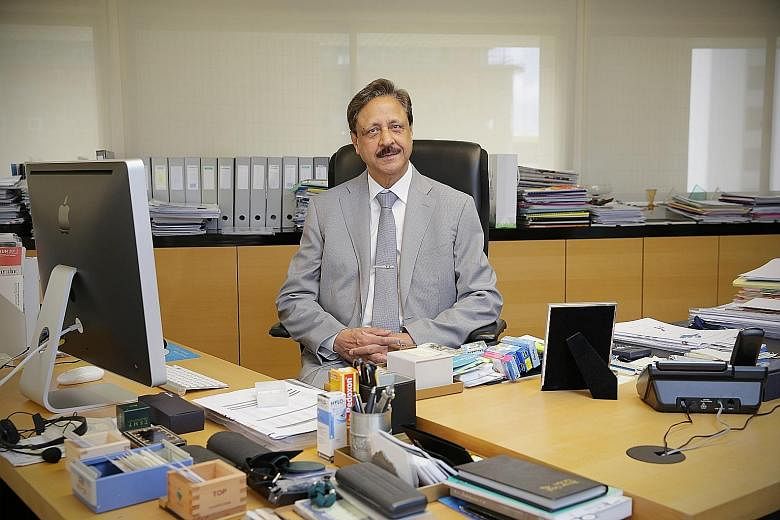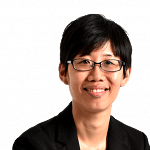Contrary to the perception held by many young graduates, there is good money to be made as an engineer, especially when working in a large company. That is the view of industry veteran Shahzad Nasim, the head of global engineering company Meinhardt Group.
Money aside, the 65-year-old pointed out that engineering is a creative profession that allows a person "to build (his) country and serve the population at large".
At a large company, you can also enjoy the satisfaction of doing big prestigious projects, he said.
Dr Nasim's view is coloured probably by Meinhardt's success.
Name any iconic project - be it the Marina Bay Financial Centre, One Raffles Quay, or the Gardens by the Bay - and Meinhardt would have had a hand in it.
A five-man company simply would not have got the job, he said.
Citing the development of Resorts World Singapore as another example, he said that his firm had a team of 50 engineers working on the job at any one time.
So for better prospects, small firms should band together to have the critical mass to do bigger jobs, or even venture out of Singapore to clinch big development projects elsewhere in the region or further.
Dr Nasim feels that the large number of firms here does not benefit the industry. While the trend in the United States was for engineering companies to merge, Singapore is facing the reverse, where everyone is setting up his own shop.
Competition among all the small firms depresses consultancy fees. Malaysia's fee levels are more than double those of Singapore as a percentage of the total project fees.
Lower consultancy fees mean that companies are not able to invest in technology, training and innovation. "You just keep doing what you were doing yesterday. But in engineering, we need to invest in and learn new skills," he said.
If fees are kept at a healthy level, the prospects of the firms will improve. This way, more bright young Singaporeans will be attracted to the profession, said Dr Nasim.
For him, creating long-lasting projects for future generations to see is a measure of success.
Dr Nasim joined the Meinhardt Group in 1978, straight after his master's programme at the National University of Singapore, and has been there ever since.
Starting at the bottom of the fledgling 10-member Singapore office, Dr Nasim proved his mettle working on the Overseas Union Bank building in 1981, the tallest building outside of the US at the time.
Originally from Pakistan, the naturalised Singaporean had intended to stay here only for a couple years after graduation, but he grew to enjoy life in Singapore and the opportunities it offered him.
By 2009, he had expanded the footprint of the company to more than 30 offices in China, the Middle East, Europe and beyond.
He was in Beijing and Shanghai, setting up offices there in 1997, despite not being able to speak a word of Mandarin. It was a small constraint that could be easily resolved by his team of 500 in Singapore.
Besides, he describes himself as someone who is "never afraid of difficulties". But he met a challenge that was nearly insurmountable, in 2009, in the middle of the global financial crisis. He had to raise enough capital to buy out the Meinhardt Group from Ms Victoria Meinhardt, the daughter of the group's Australian founder, Mr Bill Meinhardt, who died in 2003.
He had persuaded the family to sell the firm to him instead of a European-listed company, just two days before the deal was sealed, as he did not want to see the Meinhardt name disappear.
Despite drawing up a five-year plan that promised to double the firm's turnover, he could not convince the bankers to give him what amounted to a multimillion-dollar loan. They wanted him to put in a 30 per cent cash equity and sign a personal guarantee.
Which Dr Nasim did. He sold every single asset he owned, even some at half-price as he desperately tried to raise the funds.
His family was behind the decision and his only son took extended leave from his investment banking job to help put together the financing proposals.
His 35-year-old son, Mr Omar Shahzad, never went back to banking and now helms the company as chief executive.
Dr Nasim also moved the firm's headquarters from Australia to Singapore, opened another 12 offices, bringing his global network of offices to 42, and more than doubled its revenue.
On Meinhardt's 40th anniversary last November, it received the International Headquarters award from the Economic Development Board.
Today, Dr Nasim manages construction projects worth $20 billion annually.
Although he said he "could list the company tomorrow" if he wanted to, he does not want to rush into it and targets to list it in the next three years. To him, listing the company is something that will benefit his staff of 4,000, to give them the flexibility to buy into and out of the company more easily.
But he conceded that as he grows the company by acquiring smaller ones in the US, as well as picking up more projects in Africa and India, he may need the additional funds raised from the capital markets for expansion.
At 65, Dr Nasim has no plans to retire. He continues to put in long hours, leaving the office only at 9.30pm and, even at home, will often be on the phone speaking to his staff in Europe until 2am.
The bulk of his projects are now concentrated in Asia, with Hong Kong and China being the biggest area of operations, and Singapore, the second-largest.
With a construction market valued at US$3.7 trillion (S$5 trillion) yearly in Asia, Dr Nasim has no doubts that the economic centre of gravity is shifting to Asia. "In the next 20 to 30 years, all the action is going to be here," he said.


